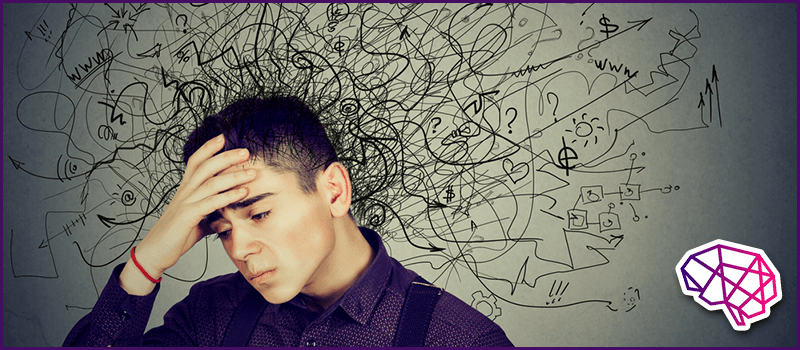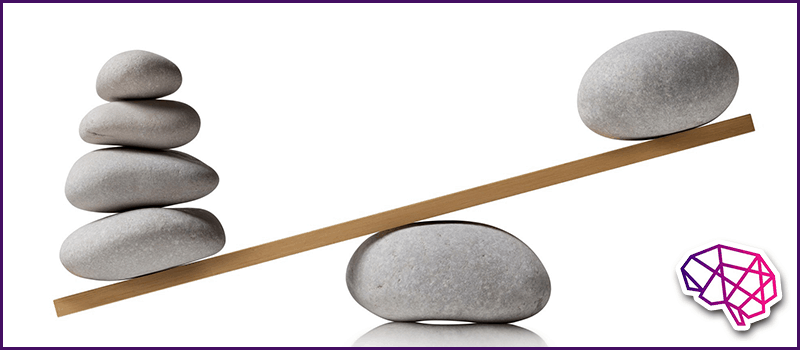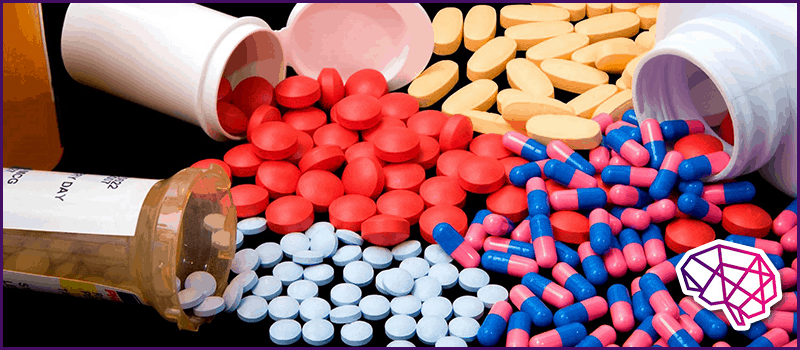
Everything You Need to Know About Chemical Imbalances In The Brain
In layman’s terms, a chemical imbalance in the brain occurs when there are either too many or too few chemical messengers – called neurotransmitters – in the brain.
Neurotransmitters, such as dopamine and serotonin, exist to facilitate connections, and ultimately communication, between nerve cells. It’s often theorised – through the aptly named ‘chemical imbalance hypothesis’ – that mental health conditions, such as anxiety and depression, are induced by a chemical imbalance within the brain.
While this may seem logical and straightforward, there is actually quite a degree of controversy that surrounds this theory. In actual fact, many of those within the medical community have largely discredited this theory, arguing that the aforementioned ‘chemical imbalance hypothesis’ is little more than a figure of speech, i.e. it doesn’t capture the true magnitude and complexity of these diseases and conditions.
In short, mental health conditions aren’t merely caused by chemical imbalances with the brain; there is a lot more to them than just that.
Symptoms of Chemical Imbalances in the Brain

It was many decades ago in the late 1950s that scientific researchers proposed the theory that mental health problems are induced by chemical imbalances in the brain, with research at the time being primarily focused on the role that brain chemicals play with regard to anxiety and depression.
It was hypothesised that sub-normal levels of neurotransmitters could lead to a wide array of symptoms, including but not limited to:
– Irritability.
– Restlessness.
– Eating too much or not eating enough.
– Social distancing.
– Feelings of being unworthy, sadness, or complete emptiness.
– Mood swings.
– Feelings of impending doom.
– Lack of concentration.
– Alcohol or drug abuse.
– Thoughts of self-harm or hurting others.
– Being devoid of energy or motivation.
– Insomnia or sleeping excessively.
What Causes Chemical Imbalances in the Brain?

Even now, in 2020, it’s still not clear exactly why mental health conditions and disorders occur. However, there is a shift towards the idea that many factors – aside from genetics – play a role in them, including a range of social and environmental factors, e.g. trauma and stress.
At this point in time, the chemical imbalance hypothesis is still unproven, yet is still used as an explanation for mental health conditions. It theorises that all mental health-related ailments are induced by an imbalance of chemical messengers, i.e. neurotransmitters, between the nerve cells that reside in the brain. An example of this is depression, which is often said to be caused by having a dearth of serotonin in the brain; however, this doesn’t explain how and why the levels of neurotransmitters becomes unbalanced to begin with.
According to research by the Harvard Medical School1, there are millions upon millions of chemical-based reactions happening in the brain at any one time – reactions which are responsible for controlling how a person feels, what their mood and frame of mind is etc.; therefore, it is impossible to ascertain whether a person truly did have a chemical imbalance in their brain at any point in time.
Evidence typically used to support the chemical imbalance hypothesis is based on the effectiveness of anti-depressant medications, which work by increasing the level of the neurotransmitters, such as serotonin and dopamine, in the brain. However, even though a person’s state of mind and mood can be improved through the ingestion of pharmaceutical preparations that enhance levels of brain chemicals, it doesn’t automatically means that a chemical deficiency caused the symptoms they were experiencing in the first place. It is possible that having low levels of neurotransmitters such as serotonin are merely a symptom of depression, rather than a cause.
Furthermore, many of those suffering from mental health conditions such as depression, don’t experience a cessation of their symptoms after being treated with the aforementioned types of medication. In fact, according to one study, only 50% of people experience positive results when taking currently-available anti-depressant medications2.
Can Chemical Imbalances in the brain be tested for?
At present, there are no 100% reliable tests to ascertain whether or not a person has a chemical imbalance in their brain. Although there appear to be an array of tests available, such as those using blood, saliva, or urine to ascertain results, these have been shown to not be very accurate at all3.
Moreover, not all neurotransmitters are created in the brain; therefore, the tests currently available will not be able to differentiate between neurotransmitter levels in the body and neurotransmitter levels in the brain. Additionally, the levels of neurotransmitters in both the body and the brain are changing all the time, which makes this type of test unreliable at best.
How are mental health conditions and disorders diagnosed?
As established above, mental health conditions aren’t diagnosed through chemical tests, and therefore and treatment plans for said disorders will not be guided by this either. Although doctors may use blood tests to rule out other health conditions that may induce the symptoms experiencing, they will not use these to diagnose mental health-related ailments.
If there are no underlying health conditions found, patients are typically referred to a mental health specialist, such as a psychologist or a psychiatrist, who will then proceed to conduct a psychological examination. This can vary from professional to professional, but it typically involves an array of questions related to your feelings, thoughts, daily habits and activities, diet, and sleep.
Which medications are used to treated chemical imbalances in the brain?

The majority of pharmaceutical drugs used to treat chemical imbalances in the brain alter levels of one (or more) of the major neurotransmitters in the brain, such as serotonin, norepinephrine, noradrenaline, and dopamine. The most common forms of medications are:
SSRI’s (selective serotonin reuptake inhibitors): These work by inhibiting the reabsorption of serotonin. Example: Prozac (fluoxetine).
SNRIs (serotonin-norepinephrine reuptake inhibitors): These work by inhibiting the reabsorption of both serotonin and norepinephrine. Example: Cymbalta (duloxetine).
MAOIs (monoamine oxidase inhibitors): These work by blocking the breakdown of dopamine, serotonin, and norepinephrine. Example: Mardil (phenelzine).
Chemical Imbalances in the Brain: A Conclusion
After examining the evidence, it’s clear that mental health conditions aren’t as straightforward as having an imbalance of chemicals in the brain; in fact, there’s a scarcity of evidence to prove that a chemical imbalance in the brain is the cause of any form of mental health disorder.
If you are experiencing any of the common symptoms associated with mental health conditions, it is vital to speak to your doctor or a healthcare professional straight away. Never hesitate to get help.
Thank you for taking the time to visit our blog; we really do appreciate it a lot! If you’d like to learn more about brain health, cognitive function, nootropics (‘smart drugs’), and everything related to our grey matter, feel free to head over to our homepage and browse our blog posts. Or, alternatively, use the search function if there’s a topic you’re specifically interested in.
If you can’t find information on a specific brain-related topic, get in touch and we’ll try and write a blog post on it!
References:
1. Harvard Health Publishing (2017). What causes depression? – Harvard Health. (online) Harvard Health. Available at: https://www.health.harvard.edu/mind-and-mood/what-causes-depression.
2. Gartlehner, G., Hansen, R.A., Thieda, P., DeVeaugh-Geiss, A.M., Gaynes, B.N., Krebs, E.E., Lux, L.J., Morgan, L.C., Shumate, J.A., Monroe, L.G. and Lohr, K.N. (2007). Discussion.(online) www.ncbi.nlm.nih.gov. Agency for Healthcare Research and Quality (US). Available at: https://www.ncbi.nlm.nih.gov/books/NBK43024/
3. Hinz, M., Stein, A. and Uncini, T. (2011). Urinary neurotransmitter testing: considerations of spot baseline norepinephrine and epinephrine. Open Access Journal of Urology, (online) 3, pp.19–24. Available at: https://www.ncbi.nlm.nih.gov/pmc/articles/PMC3818932/